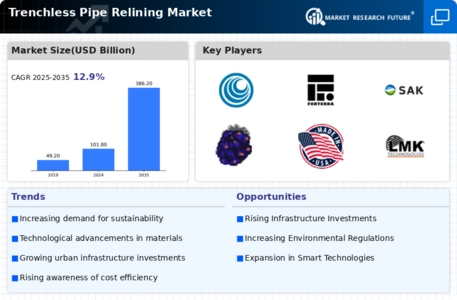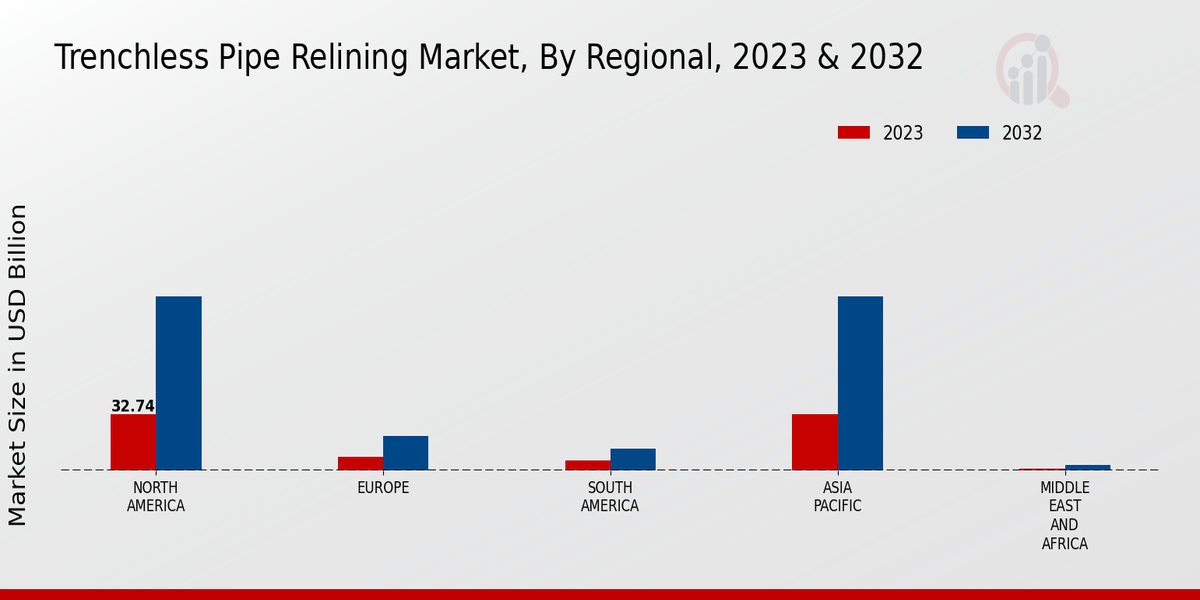Regulatory Support
Regulatory frameworks are increasingly favoring the adoption of trenchless technologies within the Global Trenchless Pipe Relining Market Industry. Governments are implementing policies that encourage sustainable construction practices, including the use of trenchless methods for pipeline rehabilitation. These regulations often provide financial incentives or grants for projects that utilize environmentally friendly technologies. As a result, contractors and municipalities are more inclined to invest in trenchless solutions, knowing they align with regulatory expectations. This supportive environment is likely to enhance market penetration and foster innovation, ultimately contributing to the industry's robust growth trajectory.
Rising Urbanization
The rapid pace of urbanization globally is a crucial driver for the Global Trenchless Pipe Relining Market Industry. As cities expand, the demand for efficient and reliable infrastructure systems intensifies. Trenchless pipe relining offers a viable solution for upgrading existing pipelines without the need for extensive excavation, thereby minimizing disruption in densely populated areas. This method is particularly advantageous in urban settings where traditional construction techniques may lead to significant traffic and logistical challenges. Consequently, the increasing urban population is expected to propel the market forward, aligning with the projected growth trends in the coming years.
Market Growth Projections
The Global Trenchless Pipe Relining Market Industry is poised for substantial growth, with projections indicating a market value of 386.2 USD Billion by 2035. This growth trajectory is underpinned by various factors, including technological advancements, regulatory support, and rising urbanization. The anticipated CAGR of 12.88% from 2025 to 2035 suggests a robust demand for trenchless solutions as industries and municipalities seek efficient methods for pipeline rehabilitation. The increasing emphasis on sustainability and environmental protection further reinforces the market's potential, making trenchless pipe relining an attractive option for future infrastructure projects.
Technological Advancements
Technological innovations play a pivotal role in propelling the Global Trenchless Pipe Relining Market Industry forward. Advances in materials, such as the development of high-performance liners and resins, enhance the durability and efficiency of relining processes. Moreover, the integration of smart technologies, including sensors and monitoring systems, allows for real-time assessment of pipeline conditions. These advancements not only improve the effectiveness of trenchless methods but also reduce operational costs. As the market evolves, it is anticipated that these technologies will contribute to the projected growth of the industry, with an expected CAGR of 12.88% from 2025 to 2035.
Environmental Considerations
Increasing environmental awareness is significantly influencing the Global Trenchless Pipe Relining Market Industry. Traditional excavation methods often lead to substantial ecological disruption, whereas trenchless technologies offer a more sustainable alternative. By minimizing surface disturbance and reducing waste generation, trenchless pipe relining aligns with global efforts to promote eco-friendly construction practices. This shift is particularly evident in urban areas where preserving green spaces and reducing carbon footprints are paramount. As a result, municipalities and private sectors are increasingly adopting trenchless solutions, further driving market growth and contributing to the anticipated market value of 386.2 USD Billion by 2035.
Growing Infrastructure Investment
The Global Trenchless Pipe Relining Market Industry is experiencing a surge in demand due to increasing investments in infrastructure development. Governments worldwide are prioritizing the upgrade and maintenance of aging water and sewage systems, which often require trenchless technologies for efficient implementation. For instance, in 2024, the market is projected to reach 101.8 USD Billion, reflecting a strong commitment to modernizing essential services. This trend is likely to continue as urbanization accelerates, necessitating innovative solutions that minimize disruption and environmental impact. Consequently, trenchless pipe relining emerges as a preferred method, aligning with global sustainability goals.



















Leave a Comment